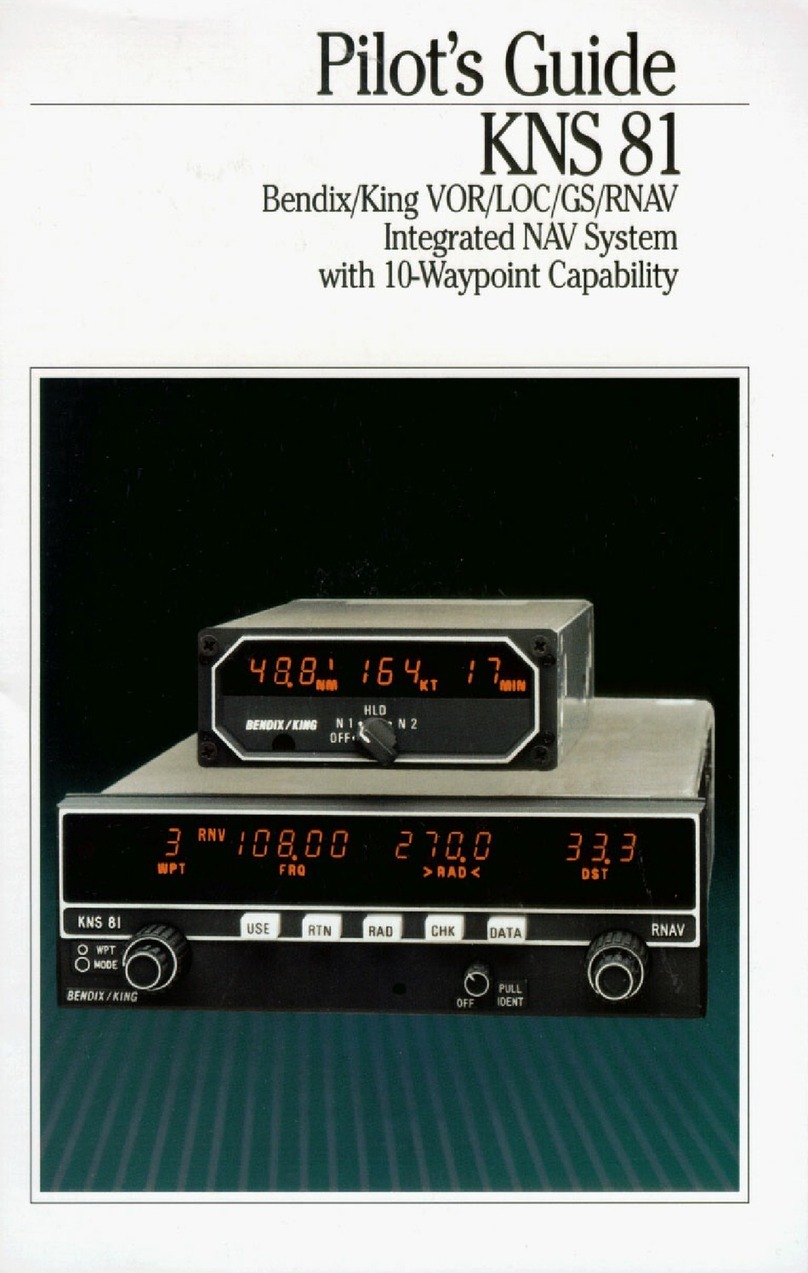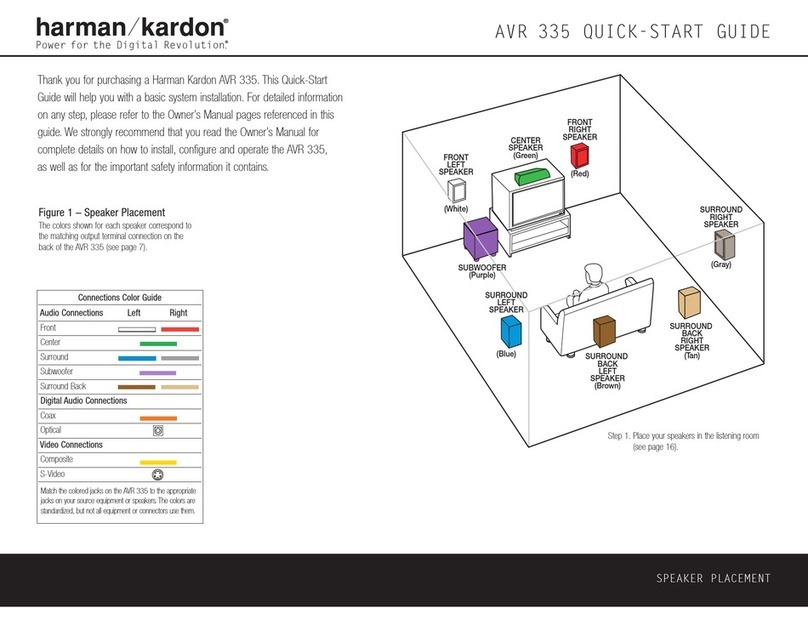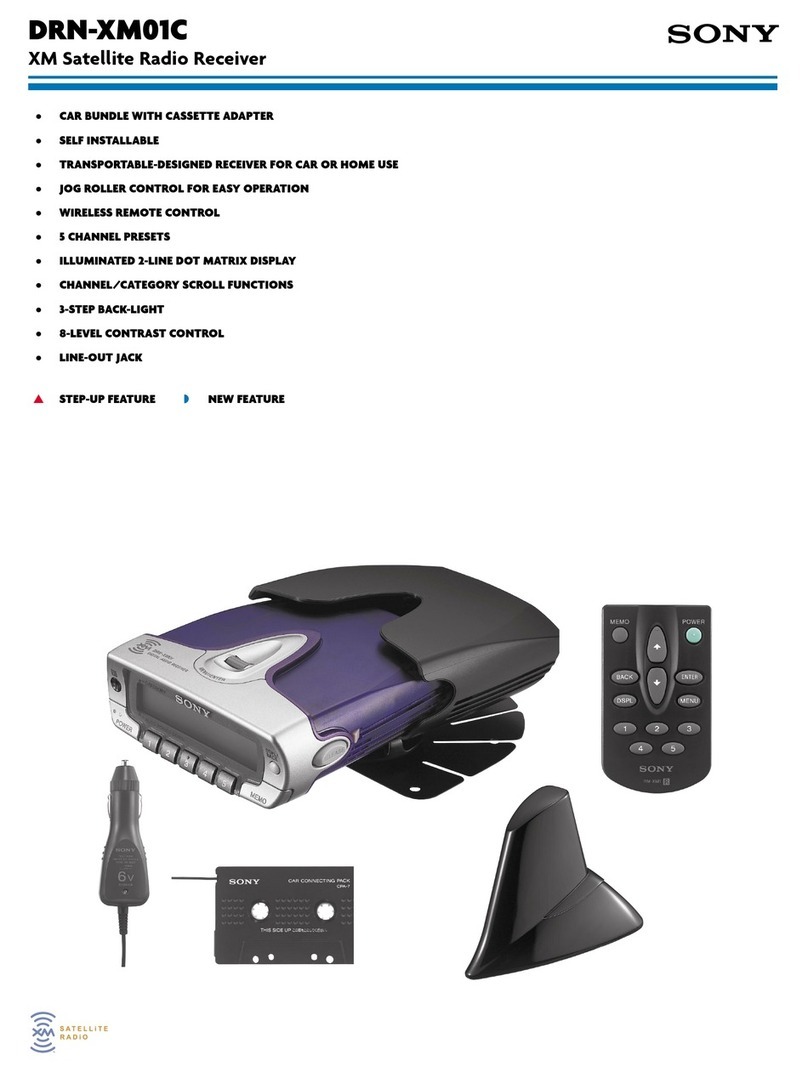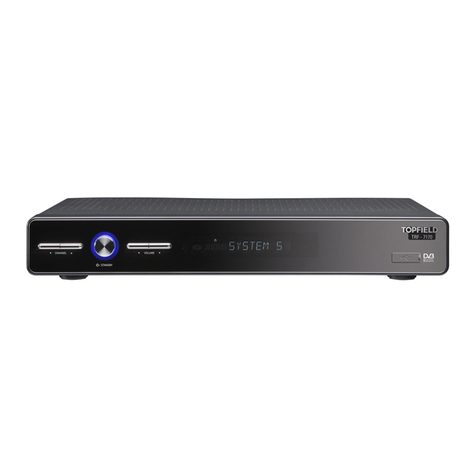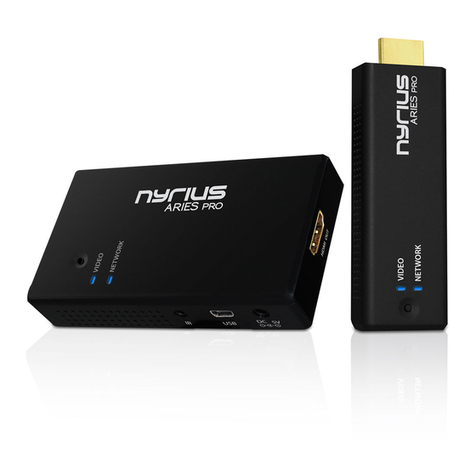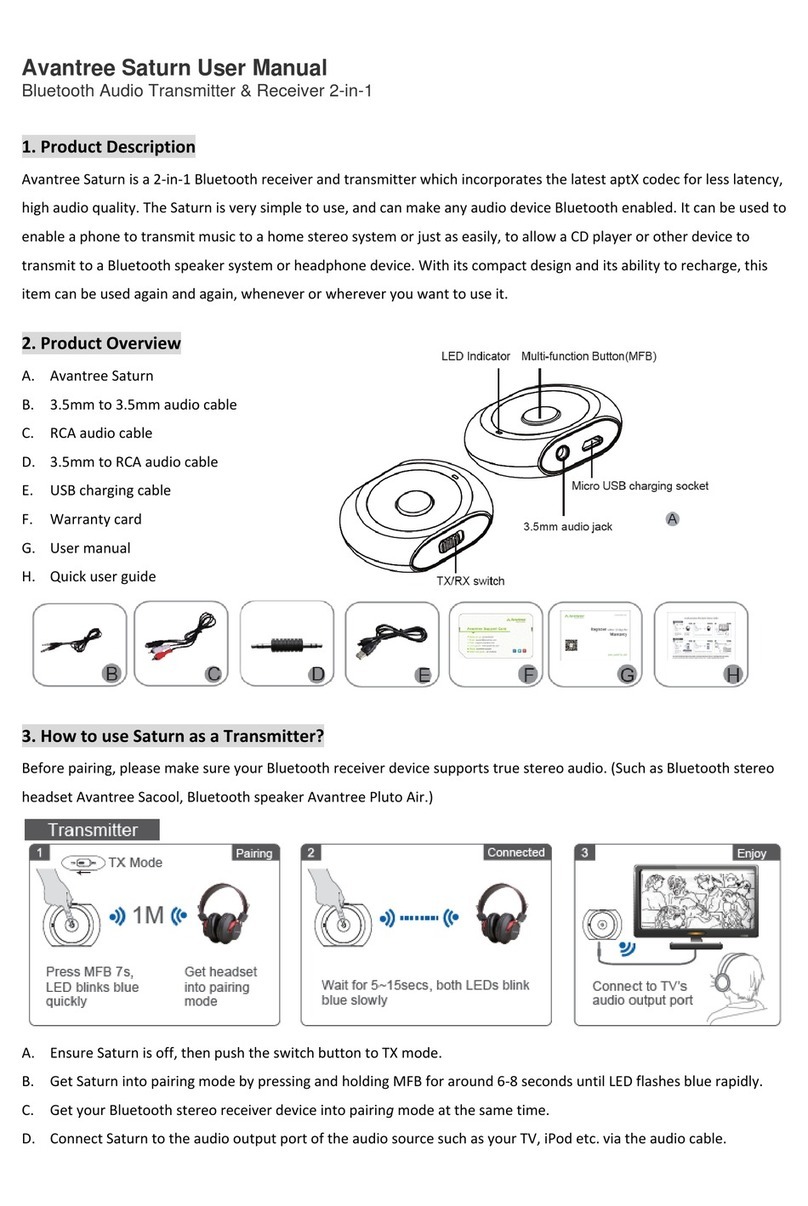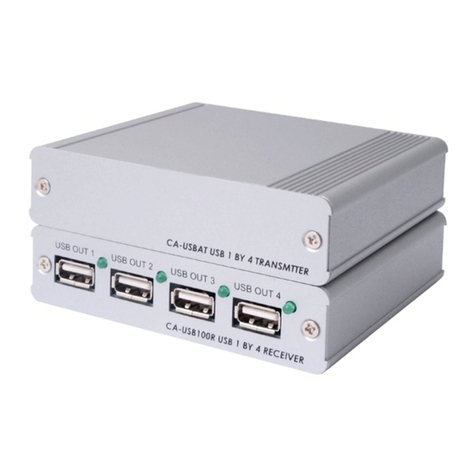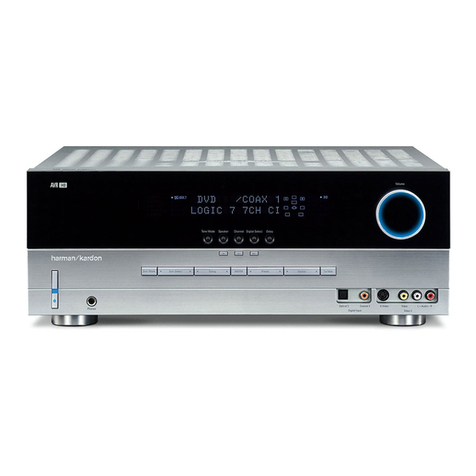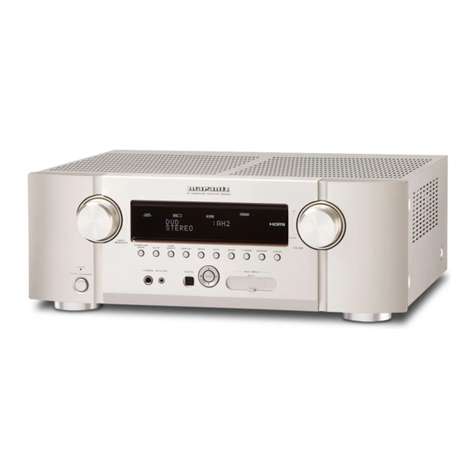Prevail-Catv WR1002RJL User manual

H
Ha
an
ng
gz
zh
ho
ou
u
P
Pr
re
ev
va
ai
il
l
O
Op
pt
to
oe
el
le
ec
ct
tr
ro
on
ni
ic
c
E
Eq
qu
ui
ip
pm
me
en
nt
t
C
Co
o.
.,
,
L
Lt
td
d.
.
1. Product Summary
WR1002RJL is our latest high-end two-way output CATV network optical receiver. The pre-amp
adopts full GaAs MMIC amplify module and the post-amp adopts GaAs amplify module.
Optimization circuit designs, coupled with the company 10 years professional design experience,
make the equipment achieve high performance index. The parameters will be displayed by
singlechip to make the engineering debug more convenient. It is the best choice for CATV network.
2. Performance Characteristics
WR1002RJL
WR1002RJL-1G
Optical Receiver
Manual

W
W
WR
R
R1
1
10
0
00
0
02
2
2R
R
RJ
J
JL
L
L
O
O
Op
p
pt
t
ti
i
ic
c
ca
a
al
l
l
R
R
Re
e
ec
c
ce
e
ei
i
iv
v
ve
e
er
r
r
M
M
Ma
a
an
n
nu
u
ua
a
al
l
l
--
1
High response PIN photoelectric conversion tube.
Optimizing circuit design, SMT production process, optimizing the whole signal path, makes
the photoelectronic signal transmission more fluent.
Professional RF attenuation chips, good RF attenuation and equilibrium linear, high precision.
GaAs amplifier device, power doubly output, high gain and low distortion.
Singlechip controls the whole work, digital display the parameters, easy and intuitive operation,
and stable performance.
Excellent AGC characteristic, when the input optical power range is -9~+2dBm, the output
lever remain unchanged, CTB and CSO basically unchanged.
Reserved the data communication interface, can connect the Ethernet transponder, access to the
network management system.
3. Technical Parameters
3.1 Link testing conditions
The performance parameters of this manual according to the measuring method of GY/T
194-2003 < Specifications and methods of measurement on optical node used in CATV
systems >, and tested in the following conditions.
Test conditions:
1. Forward optical receive part: with 10km standard optical fiber, passive optical attenuator
and standard optical transmitter composed the testing link. Set 59 PAL-D analog TV channel
signal at range of 45/87MHz~550MHz under the specified link loss. Transmit digital
modulation signal at range of 550MHz~862/1003MHz, the digital modulation signal level (in 8
MHz bandwidth) is 10dB lower than analog signal carrier level. When the input optical power of
optical receiver is -2dBm, the RF output level is 108dBμV, with 9dB output tilt, measure the
C/CTB, C/CSO and C/N.
2. Backward optical transmit part: Link flatness and NPR dynamic range are the link indexes
which is composed of backward optical transmitter and backward optical receiver.
Note: When the rated output level is the system full configuration and the receiving optical
power is -2dBm, equipment meets the maximum output level of link index. When the system
configuration reduce (that is, actual transmission channels reduce), the output level of equipment
will be increased.
Friendly Notice: Suggest you setting the RF signal to 6~9dB slope output in the practical
engineering application to improve the nonlinear index (under the node) of the cable system.

W
W
WR
R
R1
1
10
0
00
0
02
2
2R
R
RJ
J
JL
L
L
O
O
Op
p
pt
t
ti
i
ic
c
ca
a
al
l
l
R
R
Re
e
ec
c
ce
e
ei
i
iv
v
ve
e
er
r
r
M
M
Ma
a
an
n
nu
u
ua
a
al
l
l
--
2
3.2 Technical Parameters
Item
Unit
Technical Parameters
Forward optical receiving part
Optical Parameters
Receive Optical Power
dBm
-9 ~ +2
Optical Return Loss
dB
>45
Optical Receiving Wavelength
nm
1100 ~ 1600
Optical Connector Type
FC/APC, SC/APC or specified by the user
Fiber Type
Single Mode
Link Parameters
C/N
dB
≥ 51(-2dBm Input)
C/CTB
dB
≥ 65
Output level 108 dBμV
Equilibrium 6dB
C/CSO
dB
≥ 60
RF parameters
Frequency Range
MHz
45 ~862/1003
Flatness in Band
dB
±0.75
Rated Output Level
dBμV
≥ 108
Max Output Level
dBμV
≥ 114
Output Return Loss
dB
≥14
Output Impedance
Ω
75
Electrical control EQ range
dB
0~10
Electrical control ATT range
dB
0~20
Reverse Optical Transmit Part
Optical Parameters
Optical Emission Wavelength
nm
1310±10, 1550±10 or specified by the user
Output Optical Power
mW
0.5, 1, 2
Optical Connector Type
FC/APC, SC/APC or specified by the user
RF Parameters
Frequency Range
MHz
5 ~ 65(or specified by the user)
Flatness In Band
dB
±1
Input Level
dBμV
72 ~85
Output Impedance
Ω
75
General Performance
Power Voltage
V
A: AC(150~265)V; B: AC(35~90)V; C: DC48V
Operating Temperature
℃
-40~60
Storage Temperature
℃
-40~65
Relative Humidity
%
Max 95% no condensation
Consumption
VA
≤ 30
Dimension
mm
483(L)╳ 345(W)╳ 44(H)
Note:Forward RF index given above is measured when the final stage using the GaAs 25dB
power doubly module. Different modules, different parameters.

W
W
WR
R
R1
1
10
0
00
0
02
2
2R
R
RJ
J
JL
L
L
O
O
Op
p
pt
t
ti
i
ic
c
ca
a
al
l
l
R
R
Re
e
ec
c
ce
e
ei
i
iv
v
ve
e
er
r
r
M
M
Ma
a
an
n
nu
u
ua
a
al
l
l
--
3
4. Block diagram
5. Relation Table of Input Optical Power and CNR

W
W
WR
R
R1
1
10
0
00
0
02
2
2R
R
RJ
J
JL
L
L
O
O
Op
p
pt
t
ti
i
ic
c
ca
a
al
l
l
R
R
Re
e
ec
c
ce
e
ei
i
iv
v
ve
e
er
r
r
M
M
Ma
a
an
n
nu
u
ua
a
al
l
l
--
4
6. Function Display and Operating Instruction
Mode: Mode selection button.
▲ :up button, increase the value of parameters.
▼ :down button, decrease the value of parameters.
The following is the detailed instructions:

W
W
WR
R
R1
1
10
0
00
0
02
2
2R
R
RJ
J
JL
L
L
O
O
Op
p
pt
t
ti
i
ic
c
ca
a
al
l
l
R
R
Re
e
ec
c
ce
e
ei
i
iv
v
ve
e
er
r
r
M
M
Ma
a
an
n
nu
u
ua
a
al
l
l
--
5
7. Product Schematic Diagram
FRONT
BACK
1. Power indicator
3. LCD status display screen
5. Down button
7. RF test port
9. RF Output A (main road)
11. Forward optical signal input
13. Power supply switch
15. AC power supply input
Note:This equipment can connect the Ethernet transponder, access to the network management
system. With the network management transponder or not, it is up to users.
8. Common Failure Analysis and Troubleshooting
Failure phenomenon
Failure cause
Solution
After connecting the
network, the image of the
optical contact point has
obvious netlike curve or
large particles highlights
but the image background
is clean.
1. The input optical power of the
optical receiver is too high, make the
output level of the optical receiver
module too high and RF signal index
deteriorate.
2. The RF signal (input the optical
transmitter) index is poor.
1. Check the input optical power and make
appropriate adjustments to make it in the
specified range; or adjust the attenuation of
optical receiver to reduce the output level and
improve index.
2. Check the front end machine room optical
transmitter RF signal index and make
appropriate adjustments.
2. Running indicator
4. Up button
6. Mode display and control mode selection button
8. RF Output B (branch road)
10. LAN network management communication port
12. Reverse optical signal output
14. Grounding terminal

W
W
WR
R
R1
1
10
0
00
0
02
2
2R
R
RJ
J
JL
L
L
O
O
Op
p
pt
t
ti
i
ic
c
ca
a
al
l
l
R
R
Re
e
ec
c
ce
e
ei
i
iv
v
ve
e
er
r
r
M
M
Ma
a
an
n
nu
u
ua
a
al
l
l
--
6
After connecting the
network, the image of the
optical contact point has
obvious noises.
1. The input optical power of the
optical receiver is not high enough,
results in the decrease of C/N.
2. The optical fiber active connector
or adapter of the optical receiver has
been polluted.
3. The RF signal level input the
optical transmitter is too low, make
modulation degree of the laser is not
enough.
4. The C/N index of system link
signal is too low.
1. Check the received optical power of the
optical contact point and make appropriate
adjustments to make it in the specified range.
2. Recover the received optical power of the
optical contact point by cleaning the optical
fiber connector or adapter etc methods.
Specific operation methods see “Clean and
maintenance method of the optical fiber
active connector”.
3. Check the RF signal level input the optical
transmitter and adjust to the required input
range. (When the input channels number less
than 15, should higher than nominal value.)
4. Use a spectrum analyzer to check the
system link C/N and make appropriate
adjustments. Make sure the system link signal
C/N﹥51dB.
After connecting the
network, the images of
several optical contact
points randomly appear
obvious noises or bright
traces.
The optical contact point has open
circuit signal interference or strong
interference signal intrusion.
1. Check if there is strong interference signal
source; change the optical contact point
location if possible to avoid the influence of
strong interference signal source.
2. Check the cable lines of the optical contact
point, if there is shielding net or situation that
the RF connector shielding effect is not good.
3. Tightly closed the equipment enclosure to
ensure the shielding effect; if possible add
shielding cover to the optical contact point
and reliable grounding.
After connecting the
network, the images of
several optical contact
points appear one or two
horizontal bright traces.
Power supplyAC ripple interference
because of the bad earth of equipment
or power supply.
Check grounding situation of the equipment,
make sure that every equipment in the line
has been reliably grounding and the
grounding resistance must be﹤4Ω.
After connecting the
network, the received
optical power of the optical
contact point is unstable
and has large continuous
change. The output RF
signal is unstable, too. But
the detected output optical
power of the optical
transmitter is normal.
The optical fiber active connector
types do not match, maybe the APC
type connect to PC type, make the
optical signal cannot normal
transmission.
The optical fiber active connector or
adapter may be polluted seriously or
the adapter has been damaged.
1. Check the type of optical fiber active
connector and adopt the APC type optical
fiber active connector to ensure the normal
transmission of optical signal.
2. Clean the polluted optical fiber active
connector or adapter. Specific operation
methods see “Clean and maintenance method
of the optical fiber active connector”.
3. Replace the damaged adapter.

W
W
WR
R
R1
1
10
0
00
0
02
2
2R
R
RJ
J
JL
L
L
O
O
Op
p
pt
t
ti
i
ic
c
ca
a
al
l
l
R
R
Re
e
ec
c
ce
e
ei
i
iv
v
ve
e
er
r
r
M
M
Ma
a
an
n
nu
u
ua
a
al
l
l
--
7
9. Clean and maintenance method of the optical fiber active connector
In many times, we consider the decline of the optical power as the equipment faults, but
actually it may be caused by that the optical fiber connector was polluted by dust or dirt. Inspect the
fiber connector, component, or bulkhead with a fiberscope. If the connector is dirty, clean it with a
cleaning technique following these steps:
1. Turn off the device power supply and carefully pull off the optical fiber connector from the
adapter.
2. Wash carefully with good quality lens wiping paper and medical absorbent alcohol cotton. If
use the medical absorbent alcohol cotton, still need to wait 1~2 minutes after wash, let the
connector surface dry in the air.
3. Cleaned optical connector should be connected to optical power meter to measure output
optical power to affirm whether it has been cleaned up.
4. When connect the cleaned optical connector back to adapter, should notice to make force
appropriate to avoid china tube in the adapter crack.
5. The optical fiber connector should be cleaned in pairs. If optical power is on the low side after
clean, the adapter may be polluted, clean it. (Note: Adapter should be carefully operated, so as
to avoid hurting inside fiber.
6. Use compressed air or degrease alcohol cotton to wash the adapter carefully. When use
compressed air, the muzzle aims at china tube of the adapter, clean the china tube with
compressed air. When use degrease alcohol cotton, insert directions need be consistent,
otherwise can’t reach a good clean effect.
10. After-sales Service Description
1. We promise: Free warranty for thirteen months (Leave factory time on product qualification
certificate as the start date). The extended warranty term based on the supply agreement.
We responsible for lifetime maintenance. If the equipment fault is resulted from the users’
improperly operation or unavoidable environment reasons, we will responsible maintenance
but ask suitable material cost.
2. When the equipment breaks down, immediately contact local distributor or directly call our
technical support hotline 86-0571-82576002, 18967160936.
3. The site maintenance of the fault equipment must be operated by professional technicians to
avoid worse damage.
Special notice: If the equipment has been maintained by users, we will not responsible free
maintenance. We will ask suitable maintenance cost and material cost.
Note:is our registered trademark, is protected by national laws. There are some
counterfeits in the market. In order to truly safeguard the interests of users, we point out:
Please connect with distributors that we destined or authorized when ordering, and confirm
trademark and barcode.
Hangzhou Prevail Optoelectronic Equipment Co.,LTD.
Website:http://WWW.PREVAIL-CATV.COM
This manual suits for next models
1
Table of contents
